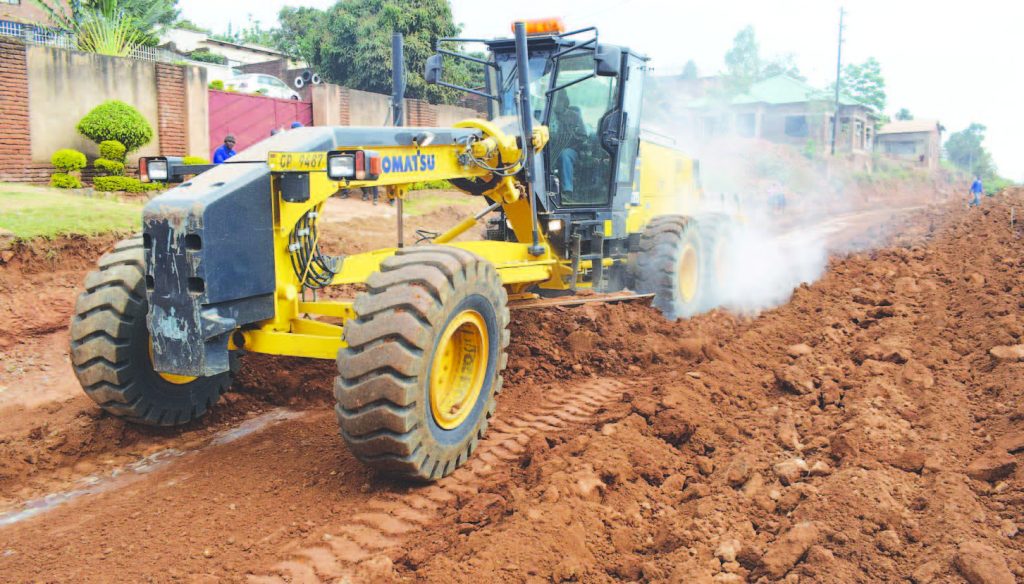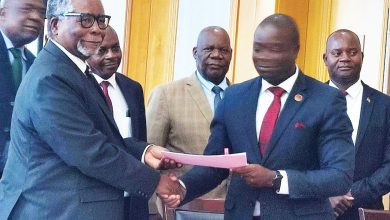Slow progress in roads infrastructure
Ministry of Transport and Public Works has only upgraded 635 kilometres (km) into paved roads in the past 10 years, signalling that the country—at this pace—may require over 300 years to fully develop the 25 000 km of national road network.
On average, it means in these 10 years around 63.5 km of paved roads were being added to the national stretch annually. Currently, the total amount of paved roads nationally stands at 4 635 km, which is18.5 percent of the total public roads network.

U n i v e r s i t y of Malawi economics professor Ben Kaluwa has since linked the poor roads with the country’s failure to attain economic growth through scaling up its gains in agriculture, tourism and other potential investment areas.
In an interview on Friday, he said: “Transportation of farm inputs and produce to and from remote areas where agriculture is dominant, is very high due to poor roads. This affects production.
“Tourism is another sector we can capitalise on but you would notice that areas with potential such as Nyika National Park attract few visitors due to poor roads.”
The national networ k comprises 15 451 km of classified roads with 9 478 km, which was recently identified in rural areas is categorised as an undesignated network, according to the Roads Authority (RA) Strategic and Business Plan of 2017-2022.
Roads are the transport sector’s backbone as they handle more than 70 percent of internal freight traffic and 99 percent of passenger traffic. They are also critical in international trade, handling more than 90 percent of freight, the RA five-year strategic plan points out.

The strategic plan indicates that in 2011, the paved roads’ total stretch stood at around 4 000 km. From then to 2016, it records that 312 km were added, meaning that in the past five years an addition 323 km was paved.
While development planners are optimistic the road can be speeded up, some commentators feel the economy is too rigid to spur a significant investment in roads development boom.
Parliamentary Committee on Transport and Public Infrastructure chairperson Uchizgi Mkandawire said: “Our National Budget is a consumptive one and not something that can achieve meaningful development of infrastructure like roads within a short span.”
He faulted politics for poor implementation of road initiatives pointing out that governing parties are forced to initiate road projects across all regions “just for the sake of balancing development even if there are no resources”.
Said Mkandawire: “As a result of this, we are not able to pay the contractors on time and we end up paying them billions in arrears and high interests. Now our committee is saying; let’s chew what we can afford to buy.
“Instead of hiring a contractor for the whole road project, we should break the road into segments and construct them separately depending on availability of resources.”
Me a n w h i l e , M a l a w i ’ s development coordination agency, the National Planning Commission (NPC) has conceded that without good roads, it is impossible to achieve Malawi 2063 (MW2063) agenda.
The MW2063 is a blueprint that seeks to transform the country into a wealthy and self-reliant industrialised country by 2063. It was launched this year as a replacement for Vision 2020.
NPC c o m m u n i c a t i o n s specialist Thom Khanje: “Within the MW2063, roads play a major role as enabler for development. Roads are catalytic and critical to the realisation of all three pillars of industrialisation, agriculture productivity and c o m m e r c i a l i s a t i o n , a n d urbanisation”.
The NPC, which also confirmed that paved roads amount to 4 635 km, hopes that through the MW2063 blueprint the country will pave 80 percent of the classified road network by 2063.
To achieve the success, Khanje said the nation will have to change the road projects implementation strategy.
“The principle is to start off on road projects where resource availability is assured so that we minimise the possibility of spreading resources too thinly over so many roads at once,” he said.
In an interview, Ministry of Transport and Public Works director of roads Kelvin Mphonda in the Ministry of Transport and Public Works said slow progress in roads development was a result of low levels of investment.
“ Ro a d i n f r a s t r u c t u r e development requires huge sums of investment. Over the past years, the requirements on the ground have exceeded available resources,” he explained.
However, there seems to be light at the end of the tunnel as Mphonda said measures were being put in place to scale up investment towards roads upgrading.
“Some of the measures that we have adopted to tackle this challenge include; Government has over the years engaged our development partners to support the road sector, exploring other sources like introduction of toll charges on our roads and obtaining local bonds for road construction,” he said.
The m i n i s t r y r e c e n t l y developed the 20-year National Transport Master Plan to guide the sustainable development of an integrated multi modal transport sector and Mphonda views it as another catalyst to increased investment in road projects.
“The following are some of the proposed interventions: Increase resources for road subsector, particularly rural roads to reduce transport costs, increase fuel levy to 20 percent of pump price over the next 10 years and Roads Fund Administration to issue bonds to raise short-term finance for road projects,” Mphonda said.
When it comes to classified roads, Malawi, which has paved 27 percent of the 15 451 km road network, does not rank poorly against its neighbours.
Zambia, whose national network snakes around 38 763 km, has 10 000 km or 26 percent which is tarred, according to information gathered from tourism website www. zambiatourism.com shows.
There are 88 100 km of classified roads in Zimbabwe, 17 400 km of which are paved, representing 19 percent, according to Africa Development Bank website www. afdb.org.
In Tanzania, 9 951km or 27 percent of the country’s 36 258 km classified national road network is paved, while in Mozambique the road network is 30 562 km long, of which 5 958 km or about 20 percent, is paved.
In most developed countries, roads have been a key investment area. In Egypt, for example, its road network has 65 050 km of which 48,000 km (about 75 percent) is paved, according to road data website www. worldhighways.com.






One Comment